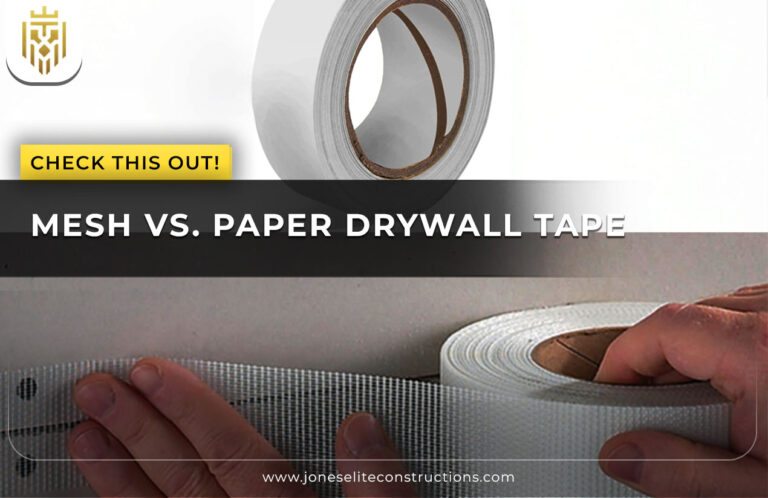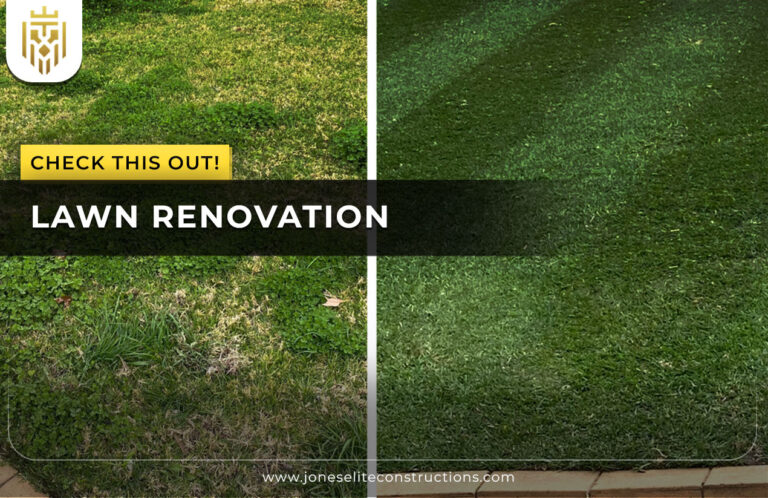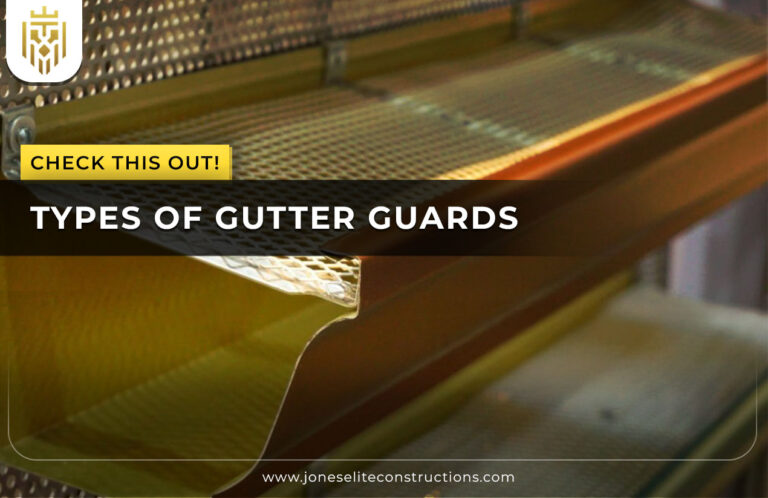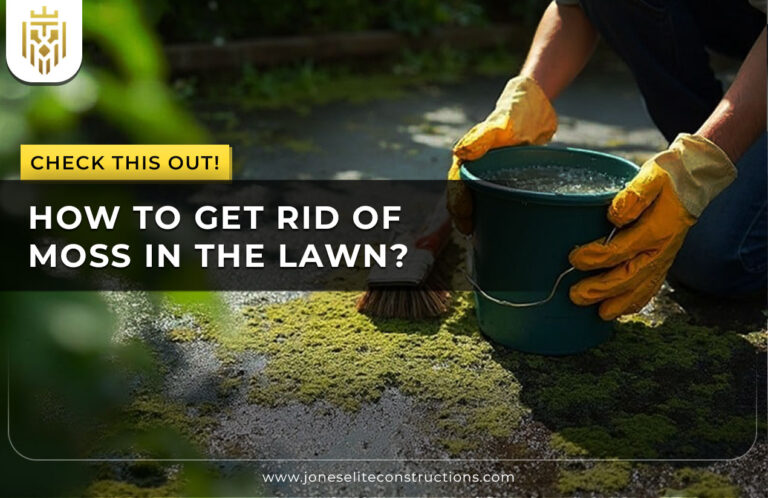What is Lawn Top Dressing?
Lawn top dressing refers to the act of applying thin coats of either organic or inorganic matter, like compost, sand or soil, over grass. This can be used to make the surface richer, increase soil quality, and boost the outcomes of long-term lawn care.
Benefits of Top Dressing a Lawn
Top dressing a lawn is a way to improve soil health, enhance the drainage, and promote the development of denser grass. This is another necessary lawn care practice that aids in the aeration and nurturing of the grass, rendering it resistant to pests, diseases, and tough weather all year round.

Improves Soil Structure
Top dressing Lawn is used to enhance the texture of the soil, which promotes the ability to retain moisture and allow air to move freely. With a thin layer of organic material, the roots become deeper and make the grass remain healthy. Constant dressing also leaves the soil less compacted and gives it firmer bases to support sustainable growth.
Boosts Nutrient Content
When you dress the lawn, you should use compost or topsoil to replenish the ground with required nutrients. This increases the activity of microbes, which increases healthy roots and greener turf. Top dressing over time also adds natural fertility to the soil as the soil becomes less reliant on chemical fertilisers.
Levels Uneven Areas
The primary benefit of lawn top dressing is that it restores low areas and mounds throughout the yard. Even irregularities are filled in with a thin coating of sand or loam. Homeowners who understand how to dress the lawn topically have a uniform appearance.
Reduces Thatch
When there is too much thatch, it will end up choking grass roots, and when you top dress, the organic material will then decompose on its own. This helps in enhanced roots and circulation of air. A healthy top dressing cycle keeps the yard green and healthy by preventing thatch accumulation.
Supports Overseeding
It is recommended that a thin layer of compost or sandy loam be applied to the ground after seeding, as a protective layer and nutrient. A properly done top dressing of the lawn will have the seeds planted correctly, creating thicker turf. The topdressing that is used together with pairing overseeding improves germination, and the lawns look greener.
Best Time to Top Dress Your Lawn
Top dressing a lawn is best done in the active growth periods – spring and fall. Grass can regenerate quicker, and there is a layer of compost or sand which helps the soil to stay healthier. Less effective are summer heat and winter dormancy.
Materials for Top Dressing
Picking the right material is vital when determining how to top dress a lawn. The choices are compost, sand, topsoil or sandy loam. They all are distinctive advantages, enhancing the drainage, nutritional provisions or mowing and supplementing your normal lawn maintenance routine.

Compost
The use of compost as a top dressing on the lawn is highly recommended, as it adds organic matter to the soil. Application of a thin coating is known to enhance microbial activity and fertility and also improves grass colour naturally. Eventually, topdressing using compost makes chemical dependence less relevant, thus making the management of turf sustainable.
Sand
Sand is also effective where the intention is to level uneven land. Sand is used in a thin layer to flatten low areas, but it is not very nutritious. To achieve long-term lawn care, sand needs to be mixed well with organic matter to enhance the structure and fertility.
Topsoil
Top dressing a lawn with topsoil enhances the structure and the nutrient content. A thin layer encourages more grass to develop and better root growth. The topsoil also regulates the drainage problem and is, therefore, an all-purpose selection to repair and also enrich the soil.
Sandy Loam
The best mix of lawn top dressing is sandy loam. It is a combination of the topsoil nutrients and drainage advantages of sand. It can be used in a thin layer and supports healthy growth, reinforces turf and maintains soil aeration to ensure longer-term results.
How to Top Dress a Lawn?
The preparation of how to overdress a lawn is step-by-step. From soil testing to aeration to a thin layer of topdressing mix, all of these stages contribute to better lawn care with healthier roots, smoother surfaces and long-lasting, greener turf.

Perform a Soil Test
Before your top dressing, getting a soil test done will show the pH levels and deficiencies. This will guarantee that the chosen top dressing material – compost, sand, or loam – meets the needs of the lawn, leading to balanced nutrition and healthier turf management over the long term.
Mow and Remove Dethatch
Mowing and dethatching prior to the application of a thin layer of topdressing makes soil available. Removing extra thatch means that the material goes to the roots and no longer gets suffocated. This is done to get the yard ready to be fed on by the lawnmowers and to have the soil absorb as many nutrients and as much water as possible.
Aerate the Lawn
Before you top dress the lawn, aerating the surface will loosen the hard soil and open channels to the air, water, and soil nutrients. The holes are filled with a layer of compost or sandy loam, which increases absorption. Topdressing with aeration contributes to the root strength and vitality of the lawn remarkably.
Apply Top Dressing
In top dressing, the surface should be sprinkled with a thin layer. Apply compost, sand or sandy loam as required. Regular application means easier growth and is one of the important aspects of good, long-term lawn care practices.
Rake and Water the Lawn
Raking is used to even out the top dressing lawn and fill depressions and smoothen the surface. Then, watering enables the nutrients to trickle into the soil in a short time. Through this process, the thin layer becomes integrated and contributes to healthy grass regeneration and improved soil performance.
Overseed (Optional)
Overseeding should be used to thicken turf after a thin layer of lawn top dressing has been applied. The germination of seeds is enhanced when the seeds are covered in a thin layer. This is a process that is optional and that helps provide long-term care to the lawn, making it much more dense and resulting in a greener and more resilient yard.
Best Practices After Top Dressing
After a top dressing of the lawn, there are practices which guarantee the permanence of the result. Laying on a thin layer is not sufficient; regular attention to grass, such as watering, overseeding, and fertilising, keeps grass flourishing. The following post-treatment measures will ensure maximum top dressing benefits and enhance healthier long-term turf growth.
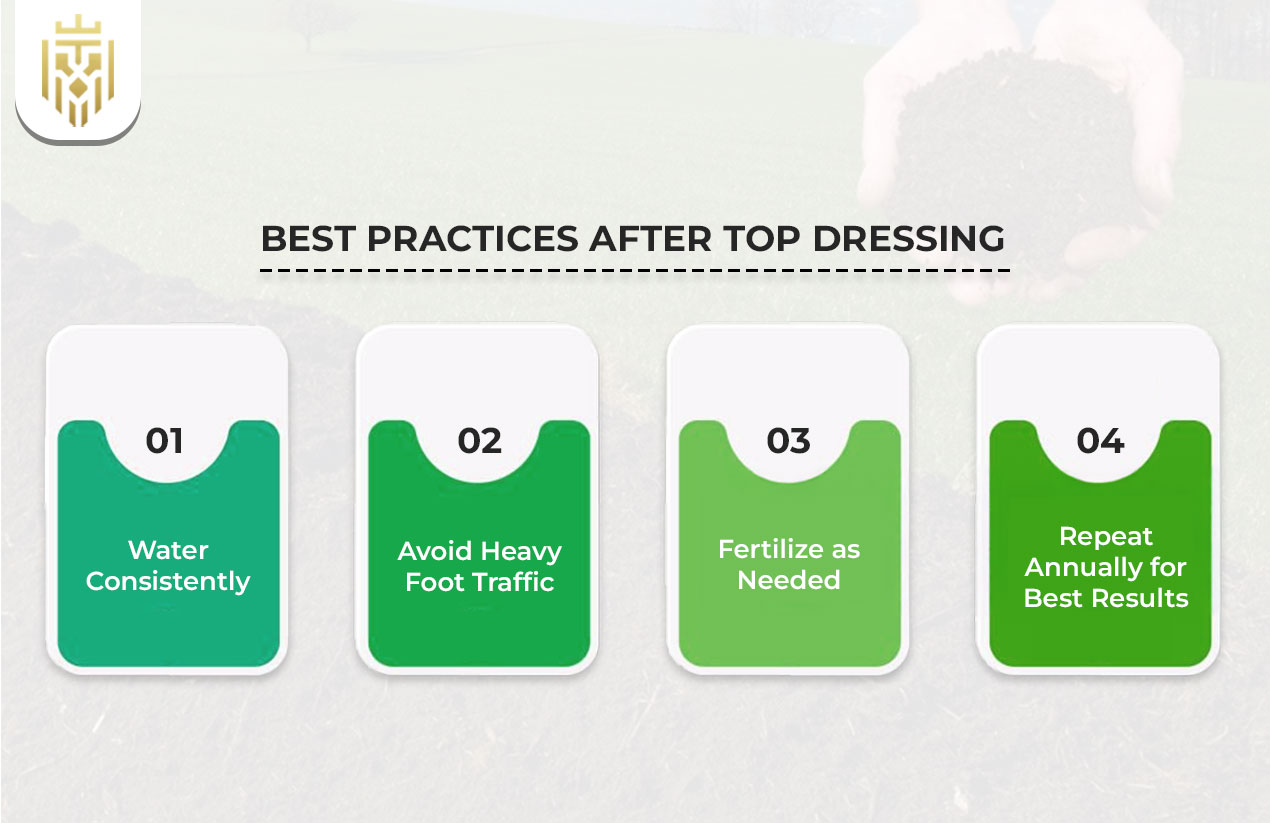
Water Consistently
When you are done topping the dress, watering is always a sure way to get the thin layer into the earth. Compost or loam nutrients are activated by moisture, which promotes healthy root growth. Turf is kept healthy, green and able to withstand external stress through regular watering after top dressing.
Avoid Heavy Foot Traffic
Not to be used following a fresh top dressing of the lawn. The pressure interferes with the structure of the soil by compressing the skin layer and then settling down. Shifting as little as possible means the nutrients mix in a uniform manner and maximise the output of your investment in lawn care and topdressing.
Fertilize as Needed
When the top dressing lawn matures, use results of soil tests to apply fertiliser. The use of nutrients is a supplement to already existing compost or loam. Avoid excessive fertilising; the thin cover can be an important source of nutrition, keeping turf strong and healthy over time.
Repeat Annually for Best Results
Repeat lawn top dressing once a year to ensure that the grass remains green. This regular rotation of the thin layer of soil makes roots stronger, makes the soil more productive, and helps it not to be compacted. This practice will make the lawn care sustainable, and the turf will be healthy and need no extra work each year.
FAQs
1) What is lawn top dressing?
Lawn top dressing is the process that comprises laying out a layer of compost, sand or soil on top of the grass. This increases the quality of the soil, healthy roots and overall results of the lawn care as a whole.
2) What are the Benefits of Top Dressing Lawn?
When you top dress a lawn, you improve the soil structure, increase nutrients, reduce thatch, flatten sloping areas, and make overseeding easier. This easy lawn care technique is the guarantee of healthier, greener, and denser grass throughout the year.
3) Should you Fertilize Before Topdressing?
It is true that top dressing lawn can be fertilised first. The nutrients are added by fertiliser and then kept in place by the thin covering of topdressing so that they can be absorbed more effectively, the lawn grows better, and the health improves.
4) How to Top Dress a Lawn?
To top dress a lawn, mow and dethatch at first, after which aerate the soil. Use a gaunt layer of compost, sand or loam, rake the soil, water it thoroughly, and seed with closer, healthier turf.

